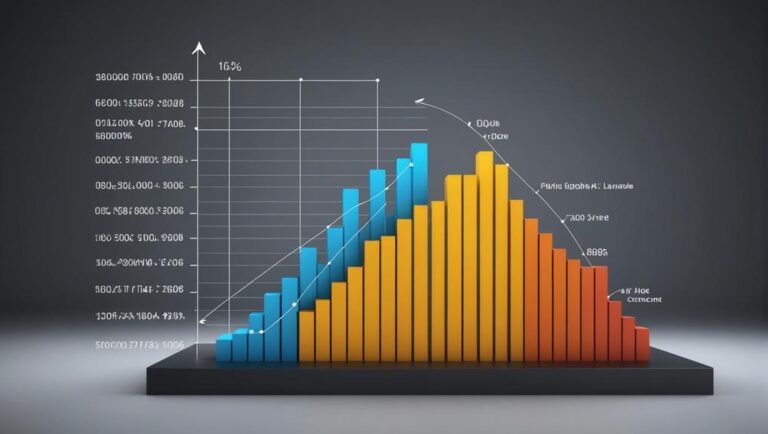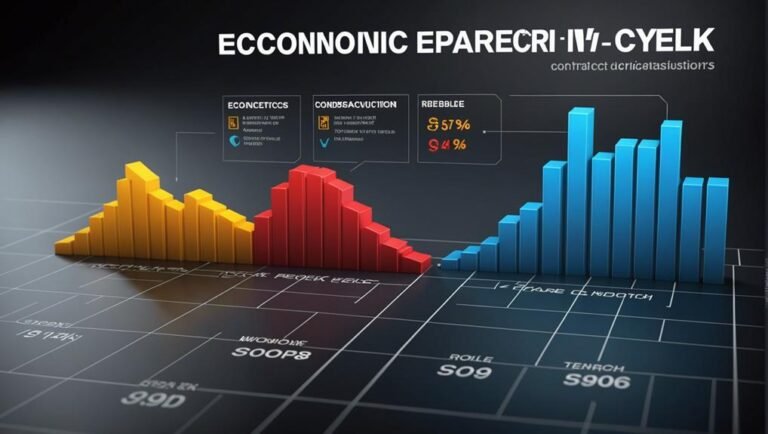Contribution Margin: Definition, Overview, and How To Calculate
Contribution margin is a key financial indicator that showcases the profitability per unit by subtracting variable costs. It aids in determining profit potential, covering fixed costs, and guiding strategic decisions. To calculate, subtract total variable costs from total revenues. Understanding this metric is pivotal for effective cost planning and profitability analysis. By grasping the fixed vs. variable costs distinction, businesses can make informed decisions on cost control strategies. Further insights into strategies for enhancing contribution margin can optimize revenue generation and cost efficiency. Mastering contribution margin is essential for maximizing profitability and making strategic business choices.
Key Takeaways
- Reveals unit profitability by deducting variable costs.
- Helps in understanding profit potential and covering fixed costs.
- Aids in strategic decisions for revenue generation and cost management.
- Calculated by subtracting variable costs from sales revenue.
- Essential for pricing strategies, cost planning, and profit determination.
Importance of Contribution Margin
The significance of contribution margin lies in its ability to reveal the profitability of each unit sold by deducting variable costs, providing pivotal insights into the financial performance and viability of a product or service. It showcases the profit potential of a product and the extent to which sales cover fixed costs, aiding in cost planning and profit determination.
By understanding the contribution margin, businesses can determine the range for selling prices, calculate expected profits, and structure sales commissions effectively. This metric forms the basis for break-even analysis, guiding strategic decisions on revenue generation and cost management.
Analyzing contribution margin helps in optimizing revenues by increasing sales or reducing variable costs, ensuring efficient utilization of resources and enhancing overall profitability.
Calculation Methods and Ratios
Utilizing established formulas and key ratios, the calculation methods for contribution margin offer a thorough insight into the financial dynamics of a product or service. Key aspects in this calculation include sensitivity analysis to evaluate the impact of changes in variables, understanding the cost structure for effective decision-making, and utilizing pricing strategies for profit planning.
Sensitivity analysis helps in evaluating how changes in variables like sales prices or costs affect the contribution margin. Understanding the cost structure aids in distinguishing between fixed and variable costs, essential for accurate calculation. Pricing strategies aligned with profit planning ensure that the contribution margin is optimized to maximize profits and guide strategic decision-making.
Fixed Vs. Variable Costs Distinction
In financial analysis and cost accounting, distinguishing between fixed and variable costs is essential for thorough understanding and strategic decision-making.
Cost classification involves categorizing costs into fixed costs, which remain constant regardless of sales volume, such as rent or machinery expenses, and variable costs, which fluctuate with production levels, like raw materials or labor.
Identifying and controlling these costs are vital for effective cost control strategies. Fixed costs are often sunk costs not factored into contribution margin calculations, while variable costs directly impact the contribution margin.
Contribution Margin Vs. Gross Profit Margin
Moving from the distinction between fixed and variable costs, an analysis of Contribution Margin versus Gross Profit Margin provides valuable insights into the financial performance and cost structures of businesses.
- Profitability Comparison:
- Contribution margin focuses on variable costs, while gross profit margin considers all costs.
- Contribution margin highlights the additional profit per unit sold.
- Gross profit margin shows the overall profitability of a product or service.
When conducting a cost analysis, understanding the differences between these two metrics is essential. Contribution margin helps in determining the incremental profit generated by each unit sold, while gross profit margin gives a broader view of the profitability of the entire product line or business. This comparison aids in making informed decisions regarding pricing strategies and cost management.
Strategies for Improving Contribution Margin
Enhancing the contribution margin of a product or service requires a strategic focus on optimizing revenue generation and cost efficiency. Cost optimization strategies include negotiating better pricing with suppliers, implementing lean production processes to reduce waste, and outsourcing non-core functions.
Revenue enhancement tactics involve increasing selling prices, expanding market reach through effective marketing campaigns, and introducing new product features to justify higher prices. Analyzing the contribution margin regularly helps identify areas for improvement and informs decision-making.
Conclusion
Ultimately, grasping and effectively utilizing the concept of Contribution Margin is essential for businesses to evaluate profitability, make informed pricing decisions, and enhance operational efficiency.
By calculating the difference between selling price and variable costs per unit, companies can determine the amount of revenue available to cover fixed costs and generate profit.
How can businesses leverage Contribution Margin to optimize their financial performance and strategic decision-making?







